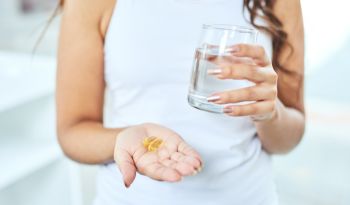About the Endokrin Károsítókhoz and they
Az endokrin károsítók mindenütt megtalálhatók. Élelmiszerekben, vízben, levegőben és fogyasztási termékekben találhatók. Általában nem láthatja, nem kóstolhatja vagy szagolhatja őket, de elkerülheti őket. Ismerje meg az endokrin károsítókat, azok hatásait és az expozíció csökkentését ebben az átfogó útmutatóban.
Mik azok az endokrin károsítók?
Az endokrin károsítók természetes vagy emberi eredetű vegyszerek, amelyek zavarhatják az endokrin rendszert - a mirigyek hálózatát (beleértve a hipotalamuszt, a pajzsmirigyet és az agyalapi mirigyet) és a hormonokat létrehozó, tároló és felszabadító szervek (például a hasnyálmirigy és a petefészkek) hálózatát.
A Környezetvédelmi Ügynökség (EPA) az endokrin károsítót úgy határozza meg, mint „olyan exogén szert, amely zavarja a szervezetben jelen lévő természetes vérben született hormonok szintézisét, szekrécióját, szállítását, anyagcseréjét, kötőhatását vagy eliminációját, amelyek felelősek a homeosztázisért, a szaporodásért és a fejlődésért.”1
A hormonok kémiai hírvivők, amelyek áthaladnak a véráramon, szabályozzák a test folyamatait, és lehetővé teszik a sejtek számára, hogy kommunikáljanak egymással. Az embereknek több mint 50 különböző hormonja van, amelyek sokféle funkcióval rendelkeznek, kezdve a stressz (kortizol) és a női szaporodási ciklus kezelésétől (ösztrogén és progeszteron) a hangulat szabályozásáig (szerotonin, endorfin és oxitocin) és a vércukorszint (inzulin) energiára történő metabolizálásáig.
Az endokrin rendszert károsító vegyszerek (EDC) lehetnek természetesek vagy emberi eredetűek. Ezeknek a vegyszereknek a számos forrása a műanyagok, peszticidek, játékok, tapadásmentes edények, tartósítószerek, testápolási termékek, gyógyszerek és ipari vegyszerek. Az endokrin károsító vegyszerekkel kapcsolatos egészségügyi problémák miatt a közegészségügyi szervezetek és szabályozó ügynökségek, például a Környezetvédelmi Munkacsoport, az Endokrin Társaság és a Környezetvédelmi Ügynökség részt vesznek az EDC-k tanulmányozásában és megelőzésében.
Bár sok EDC-t el kell kerülni, nem mindegyik káros. Például a szója endokrin károsítók (azaz a szója izoflavonok) egészségügyi előnyöket nyújthatnak felnőtt nők számára, ideértve a menopauza tüneteinek, például a hőhullámok javítását, valamint a csontritkulás, a szívbetegségek és az emlőrák kockázatának csökkentését.2
Mit csinálnak az endokrin károsítók?
Az endokrin károsítók megzavarják az endokrin rendszer működését, és számos káros egészségügyi hatást okoznak. Ezt sokféleképpen teszik:
- Változtassa meg a természetes hormonszintet: Egyesek megváltoztatják a természetes hormon szintjét a szervezetben azáltal, hogy megzavarják a hormonok termelését, anyagcseréjét, szállítását vagy eliminációját.
- Blokkolja a hormonreceptorokat: Mások blokkolják a célsejtek hormonreceptorait, megakadályozva a hormonális aktivitást és a kívánt választ.
- Zavarja a génexpressziót vagy utánozza a természetes hormonokat: Mások pusztítást okoznak azáltal, hogy zavarják a génexpressziót vagy utánozzák a természetes hormonokat, így a test túlreagál a hormonális jelekre.
Az endokrin rendszer összetett és érzékeny, így még kis mennyiségű EDC is problémákat okozhat.
Példák az endokrin károsítókra
Az elmúlt 50 évben a műanyagok globális termelése hatszorosára nőtt, 50 millió tonnáról közel 300 millió tonnára. Ennek eredményeként az emberek rendszeresen több endokrin károsítónak vannak kitéve.
Az Endokrin Társaság szerint 85 000 ember által készített vegyi anyag van a világon, amelyeknek az emberek naponta ki vannak téve.3 Több mint ezer lehet endokrin károsító. Az Egyesült Államok Élelmiszer- és Gyógyszerügyi Hivatala több mint 1800 vegyszert azonosított, amelyek megzavarják a három endokrin út legalább egyikét - az ösztrogént, az androgént és a pajzsmirigyet.
Az endokrin zavarók gyakori példái a következők:
- Brómozott égésgátlók (BFR): A BFR-k csökkentik a fogyasztási cikkek, például ruházat, bútorok és elektronika gyúlékonyságát.
- Poliklórozott bifenilek (PCB): A PCB-ket az EPA 1979-ben betiltotta, de még mindig jelen vannak a szigetelésben, az elektromos berendezésekben és az olaj alapú festékekben.
- Oxibenzon: Egyes napvédő krémekben és napvédő faktort (SPF) tartalmazó termékekben található oxibenzon áthaladhat a bőrön és a placenta akadályokon.
- Nehézfémek: Az endokrin károsító nehézfémek közé tartozik az ólom, a kadmium, a higany és az arzén.
- Biszfenol A (BPA): A BPA megtalálható a pénztárgépekben és az élelmiszerdobozbélésekben, valamint a 2011 előtt gyártott műanyag babatermékekben, beleértve a kortyás csészéket, cumit és babacüveket.
- Parabének: Ezt a vegyi anyagcsoportot gyakran hozzáadják a kozmetikumokhoz, élelmiszerekhez és gyógyszerekhez tartósítószerként.
- Peszticidek: A peszticideket hagyományos, nem ökológiai termékeken használják a gyomok, poloskák és gombák megelőzésére és leküzdésére.
- Ftalátok: Számos termékben találhatók, beleértve a műanyag csomagolásokat, valamint az élelmiszer- és italtartályokat, és ezek a vegyi anyagok kimosódhatnak élelmiszerekbe és vízbe - különösen mikrohullámú sütőben.
- Per- és polifluor-alkil anyagok (PFA): A PFA-kat számos ipari és fogyasztási termékben használják, például tűzoltó habokban, foltriasztókban, vízálló ruházatban és tapadásmentes edényekben. „Örökké vegyszereknek” nevezik őket, mert nem bomlanak le könnyen.
- Fitoösztrogének: Ezek az ösztrogén-utánzók megtalálhatók a növényi élelmiszerekben, például a hüvelyesekben - különösen a szójababban és a szójatermékekben, például a tofu, a tempeh és az edamame.
- Dioxinok: A dioxinok olyan környezeti szennyező anyagok, amelyek az ipari folyamatok, például az olvasztás és a klórfehérítés, valamint olyan természeti események, mint az erdőtüzek és a vulkánkitörések melléktermékei.
Az endokrin károsítók által okozott egészségügyi problémák
Bár nincsenek specifikus endokrin zavarok tünetei, a hormonkárosító vegyi anyagok számos egészségügyi problémához kapcsolódnak és kapcsolódnak. Ezek közé tartozik:
- Meddőség és reproduktív problémák mind férfiaknál, mind nőknél, mint például endometriózis és policisztás petefészek szindróma (PCOS)
- Menstruációs ciklus rendellenességei, beleértve a PMS-t, görcsöket és súlyos időszakokat
- Korai menopauza4
- Korai pubertás
- A magzati idegfejlődési problémák figyelemhiányos rendellenességet (ADHD), autizmust, kognitív diszfunkciót és viselkedési problémákat eredményezhetnek5
- Cukorbetegség, elhízás, szív- és érrendszeri betegségek és metabolikus szindróma6
- Pajzsmirigybetegségek, beleértve a hiperaktivitást (hyperthyreosis), a pajzsmirigy alulműködését (hypothyreosis) és a pajzsmirigyrákot7
- Rák, különösen a hormonokkal kapcsolatos rákok, például mell-, prosztata- és petefészekrák
- A Cushing-szindróma egy endokrin rendellenesség, amely akkor fordul elő, amikor a test túl sokat termel a stresszhormon kortizolból, és a szint hosszú ideig magas marad
- Az Addison-kór (más néven mellékvese-elégtelenség) egy endokrin rendellenesség, amely akkor fordul elő, amikor a mellékvesék nem termelnek elegendő szteroid hormont
- Parkinson-kór és Alzheimer-kór
Hogyan kerüljük el az endokrin károsítókat
Számos lépést tehet annak érdekében, hogy elkerülje az endokrin károsítókat az étkezésben és ivásban, a háztartási termékekben és a piperecikkekben. Olvassa el az egészség védelmére vonatkozó tippeket.
Figyelje meg, mit eszel és iszol
Kerülje a peszticideket
A peszticideket széles körben használják a hagyományos élelmiszertermelésben a kártevők, például rovarok, gyomok és gombák elleni védekezésre. A Környezetvédelmi Munkacsoport 46 hagyományos gyümölcsöt és zöldséget elemzett, és megállapította, hogy a következő 12 (azaz a „Dirty DozentM”) szennyezett leginkább peszticidekkel: eper, spenót, gallér és mustárzöld, szőlő, őszibarack, körte, nektarin, alma, kaliforniai és csípős paprika, cseresznye, áfonya és zöldbab.8
Vásároljon bioélelmiszereket, ha lehetséges
Ha hagyományos terméket használ, alaposan mossa le gyümölcs- és zöldségmosással vagy szódabikarbóna oldattal.
Legyen az bio állati termékekkel is. Az EDC-k felhalmozódhatnak a hús, a baromfi és a tejtermékek zsírsejtjeiben. Az ökológiai gazdálkodók ökológiai takarmányt biztosítanak állataikat, és az állatokat antibiotikumok vagy szintetikus növekedési hormonok nélkül nevelik.9 Ha hagyományos állati termékeket fogyaszt, válasszon karcsúbb darabokat és alacsony zsírtartalmú tejtermékeket.
Kerülje a konzerveket és a műanyag csomagolásokat
A dobozokat általában BPA-val bélelik, hogy megakadályozzák a korrodációt. A műanyagok kimosíthatják az EDC-ket, például a BPA-t és a ftalátokat. Válasszon inkább friss ételeket vagy üvegbe vagy aszeptikus kartondobozba csomagolt ételeket. A Bee's Wrap nagyszerű természetes alternatívája a műanyag csomagolásnak.
Válassza a Smart Seafoodlehetőséget
A tenger gyümölcsei több hormonkárosítót is tartalmazhatnak, beleértve a higanyt, a peszticideket és a BFR-t.10 Az expozíció csökkentése érdekében egyél kevesebbet az élelmiszerláncban magasabb pontban lévő nagyobb halból, mint például a tonhal és a kardhal. Nagyobb valószínűséggel tartalmaznak EDC-ket. Ehelyett egyél több kisebb halat, például szardíniát vagy szardellát, amelyek jellemzően kevesebb EDC-t tartalmaznak.
Győződjön meg róla, hogy elegendő omega-3 zsírsavat kap egy omega-3 zsírsav vagy halolaj-kiegészítő, amelyek általában alacsony higany- és PCB-tartalommal rendelkeznek.11 egyéb omega-3 zsírsavtartalmú élelmiszerek, például dió, lenmag, chia lenmag és .
Egyél otthon
Több mint 10 000 ember részvételével végzett tanulmány, amely a ftalátoknak való kitettséget vizsgálta, pozitív összefüggést talált az étkezés és az androgénkárosító szint között.12 A gyorsétterem és a gyorsétterem csomagolása szintén potenciális EDC-forrás.13
Kerülje a tapadásmentes edényeket és edényeket
A tapadásmentes acél vagy vas edényeket és rozsdamentes acél vagy fa edényeket használjon tapadásmentes acél vagy fa edényeket. Ne tegye mikrohullámú ételeket műanyag tartályokban - használjon üveget. Tárolja az élelmiszereket rozsdamentes acél vagy üvegtartályokban.
Igyon szűrt vizet
A csapvíz az EDCS egyik fő forrása lehet.14 Az expozíció csökkentése érdekében szűrje le a csapvizet, és használjon rozsdamentes acél vizes palackot újrafelhasználható műanyag palackok helyett.
Mondj IGENT a tisztításra, de nemet a hagyományos háztartási termékekre
Az EDC-k (és fertőző betegségek) elkerülésének egyik legjobb módja az, ha gyakran mosson kezet - különösen étkezés előtt. Ügyeljen arra, hogy természetes szappant használjon, nem antibakteriális, amely mentes mesterséges illatanyagoktól.
Csökkentse az otthonába bejutó toxinok mennyiségét, ha leveszi a cipőjét, amikor bejársz az ajtón. Használjon HEPA szűrővel ellátott vákuumot az EDC-k eltávolításához a házban.
Cserélje ki a hagyományos háztartási tisztítószereket, beleértve a törlőkendőket, mosószereket, WC-csésze tisztítószereket és fertőtlenítőszereket, „zöld” vagy „természetes” tisztítószerekre. Egy tanulmány megállapította, hogy azok a nők, akik hagyományos fehérítőszereket, fertőtlenítő törlőkendőket és mosogatószert használtak, több illékony szerves vegyület levegőkoncentrációja magasabb volt, beleértve a kloroformot, a szén-tetrakloridot és a dioxánt, mint azok a nők, akik nem használták ezeket a termékeket.15
Egyéb jó EDC-mentes lehetőségek a következők:
- Ecet: kiválóan alkalmas munkalapokhoz, WC-khez és üvegfelületekhez
- Szódabikarbóna: tökéletes foltok eltávolítására és szagtalanítására
- Kasztíliai szappan: vízzel kombinálva megtisztíthatja otthonát és háziállatait
Ahelyett, hogy mesterséges légfrissítőket használna, amelyek hormonkárosítókat, például ftalátokat tartalmazhatnak, vásároljon illóolajokat és diffúzort. Illóolajok antimikrobiális tulajdonságokkal rendelkeznek, ami azt jelenti, hogy kiválóan fertőtlenítik otthonát.16 Jó illóolajok fertőtlenítésére : teafa, eukaliptusz, citrom, borsmentaés citromfű.
Válasszon gondossággal személyi ápolási termékeket és piperecikkeket
Csakúgy, mint a tisztítószerek, sok hagyományos testápolási termék tartalmaz hormonkárosítókat. Vegyszereket, amelyek közül néhány EDC-k, gyakran hozzáadják olyan termékekhez, mint a samponok, szappanok és testmosószerek, hogy „szép” illatúak legyenek, antibakteriális tulajdonságokkal rendelkeznek és/vagy habosak legyenek.
A testápolási termékekben található potenciális EDC-k a következők:
- PFA-k: hozzáadják bizonyos kozmetikumokhoz, például hidratálókhoz és alapozókhoz, és bizonyos típusú fogselyemhez használják
- Triklozán: fertőtlenítőszerként használják egyes fogkrémekben és szájvízben
- Parabének: hozzáadva néhány kozmetikumokhoz, hajtermékekhez, bőrkrémekhez, borotvakrémekhez és fényvédőkhöz
A menstruációs termékek, például a tamponok és az eldobható párnák ftalátokat, peszticideket és biszfenolokat is tartalmazhatnak.
Címke olvasása
Kerülje azokat a termékeket, amelyek ftalátot, PFAS-t (az összetevő „fluorot” tartalmaz), parabéneket, oxibenzonot (napkrémekben használják) és a „illat” szót, ami általában azt jelenti, hogy a termék számos vegyi anyagot tartalmaz.
Válasszon illatmentes és zöld termékeket
Keressen ökocímkéket és címkéket, például „PFAS-mentes”, „klórmentes” és „parabénmentes”.17 Ez különösen fontos a rendszeresen használt termékeknél, például samponoknál, kondicionálóknál, borotvakkrém, körömlakk, fogkrém, } fogselyem, fényvédőés hidratáló krémek. Használjon szerves pamut tamponokat és párnákat, újrafelhasználható szövetpárnákat vagy menstruációs csészét a hagyományos menstruációs termékek helyett.
Elvitelre
A lényeg az, hogy tudatában legyünk arról, hol vannak az EDC-k. Ezután fokozatosan változtassa meg étrendjét, a csomagolótartályok típusait, a tisztítószereket és a testápolási cikkeket. Kezdje azzal, hogy több friss, bio és feldolgozatlan ételt fogyaszt. Kerülje a műanyag tartályokat és csomagolásokat, amennyire csak lehetséges, és cserélje ki testápolási termékeit természetes alternatívákra. Jót fog tenni mind a testének, mind a környezetének.
Referenciák:
- Diamanti-Kandarakis E, Bourguignon JP, Giudice LC és mtsai. Endokrin károsító vegyszerek: az endokrin társadalom tudományos nyilatkozata. Endocr Rev. 2009; 30 (4) :293.
- Patisaul HB. Az étrendi fito-ösztrogének által okozott endokrin zavar: hatás a dimorf szexuális rendszerekre és viselkedésre. Proc Nutr Soc. 2017; 76 (2) :130.
- Gyakori EDC-k és hol találhatók | Endokrin Társaság. Hozzáférés 2024. június 25-én.
- Grindler NM, Allsworth JE, Macones GA, Kannan K, Roehl KA, Cooper AR. Perzisztens szerves szennyező anyagok és korai menopauza amerikai nőknél. PLoS One. 2015; 10 (1).
- Di Pietro G, Forcucci F., Chiarelli F. Endokrin károsító vegyszerek és gyermekek egészsége. Int J Mol Tudomány 2023; 24 (3): 2671.
- Gore AC, Chappell VA, Fenton SE és mtsai. Összefoglaló az EDC-2-hez: Az Endokrin Társaság második tudományos nyilatkozata az endokrin károsító vegyi anyagokról. Endocr Rev. 2015; 36 (6): 593-602.
- Murthy MB, Murthy BK. Pajzsmirigy-károsítók és lehetséges klinikai következményeik. Indiai J Pharmacol. 2012; 44 (4) :542.
- Az EWG 2024-es vásárlói útmutatója a termékekben található peszticidekhez | Dirty Dozen. Hozzáférés 2024. június 30-án.
- Hogyan nevelnek az állatokat szervesen? | OTA. Hozzáférés 2024. június 30-án.
- Cunha SC, Menezes-Sousa D, Mello F. V. és mtsai. Felmérés a tenger gyümölcseiben lévő endokrin károsító vegyi anyagokról: előfordulás és eloszlás. Környezeti Res. 2022; 210:112886.
- Biztonságos a halolaj? Mi a helyzet a Merkúrral? - ConsumerLab.com. Hozzáférés 2024. június 30-án.
- Varshavsky JR, Morello-Frosch R, Woodruff TJ, Zota AR. A kumulatív ftalátokexpozíció étrendi forrásai az Egyesült Államok általános populációja körében az NHANES 2005—2014-ben. Körülbelül 2018; 115:417-429.
- Zota AR, Phillips CA, Mitro SD. Legutóbbi gyorsétter-fogyasztás, valamint biszfenol A és ftalátok expozíció az Egyesült Államok lakossága körében az NHANES-ben, 2003—2010. Környezeti egészségügyi perspektíva. 2016; 124 (10): 1521.
- Gonsioroski A, Mourikes VE, hibái JA. Endokrin károsítók a vízben és azok hatásai a reproduktív rendszerre. Int J Mol Tudomány 2020; 21 (6).
- Calderon L, Maddalena R, Russell M és mtsai. A hagyományos és „zöld” tisztítószerekhez kapcsolódó illékony szerves vegyületek levegőkoncentrációi valós és laboratóriumi körülmények között. Beltéri levegő. 2022; 32 (11).
- Bailey ES, Curcic M, Biros J, Erdogmuş H, Bac N, Sacco A. Illóolaj fertőtlenítő hatékonysága a SARS-CoV-2 mikrobiális helyettesítők ellen. Front Közegészségügy. 2021; 9:783832.
- Bevezetés a környezetbarátabb termékek ökocímkéjébe és szabványaiba | US EPA. Hozzáférés 2024. július 1-jén.
FELELŐSSÉGKIZÁRÓ NYILATKOZAT:A jelen blognak nem célja diagnózis felállítása...














































































 Tartalomjegyzék
Tartalomjegyzék
















